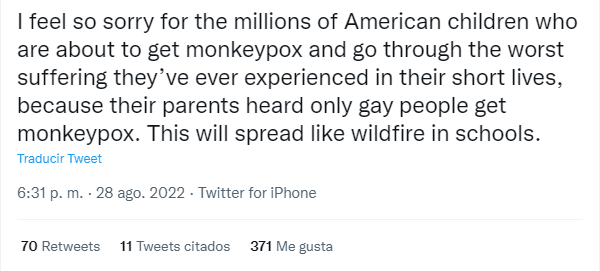
¿Por qué la viruela símica se está apagando?
"Immunity acquired through infections in the most sexually active men may be the biggest factor", pero en mi opinión el artículo descarta demasiado rápido las vacunas y, sobre todo, el comportamiento.
science.org/doi/10.1126/sc…
"Immunity acquired through infections in the most sexually active men may be the biggest factor", pero en mi opinión el artículo descarta demasiado rápido las vacunas y, sobre todo, el comportamiento.
science.org/doi/10.1126/sc…
"The slowing growth of the outbreak is likely due to a combination of many factors, including vaccination, behavior change, and possibly increases in infection-acquired immunity among a segment of the sexual networks at highest risk".
cdc.gov/poxvirus/monke…
cdc.gov/poxvirus/monke…
Buen momento para recordar que hubo unas semanas durante este verano en las que los colegios, el #MonkeypoxIsAirborne, el hacer fotos a la gente por la calle y el autodiagnóstico falso, fueron tendencia. 

• • •
Missing some Tweet in this thread? You can try to
force a refresh








